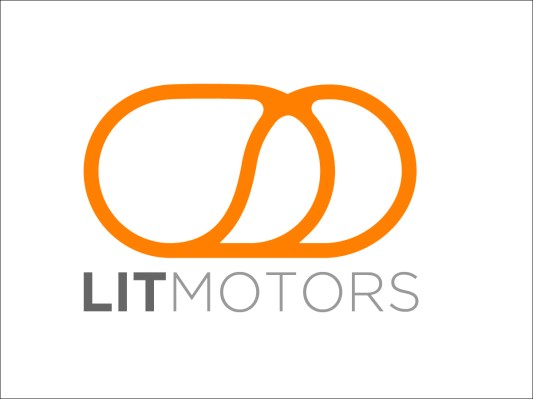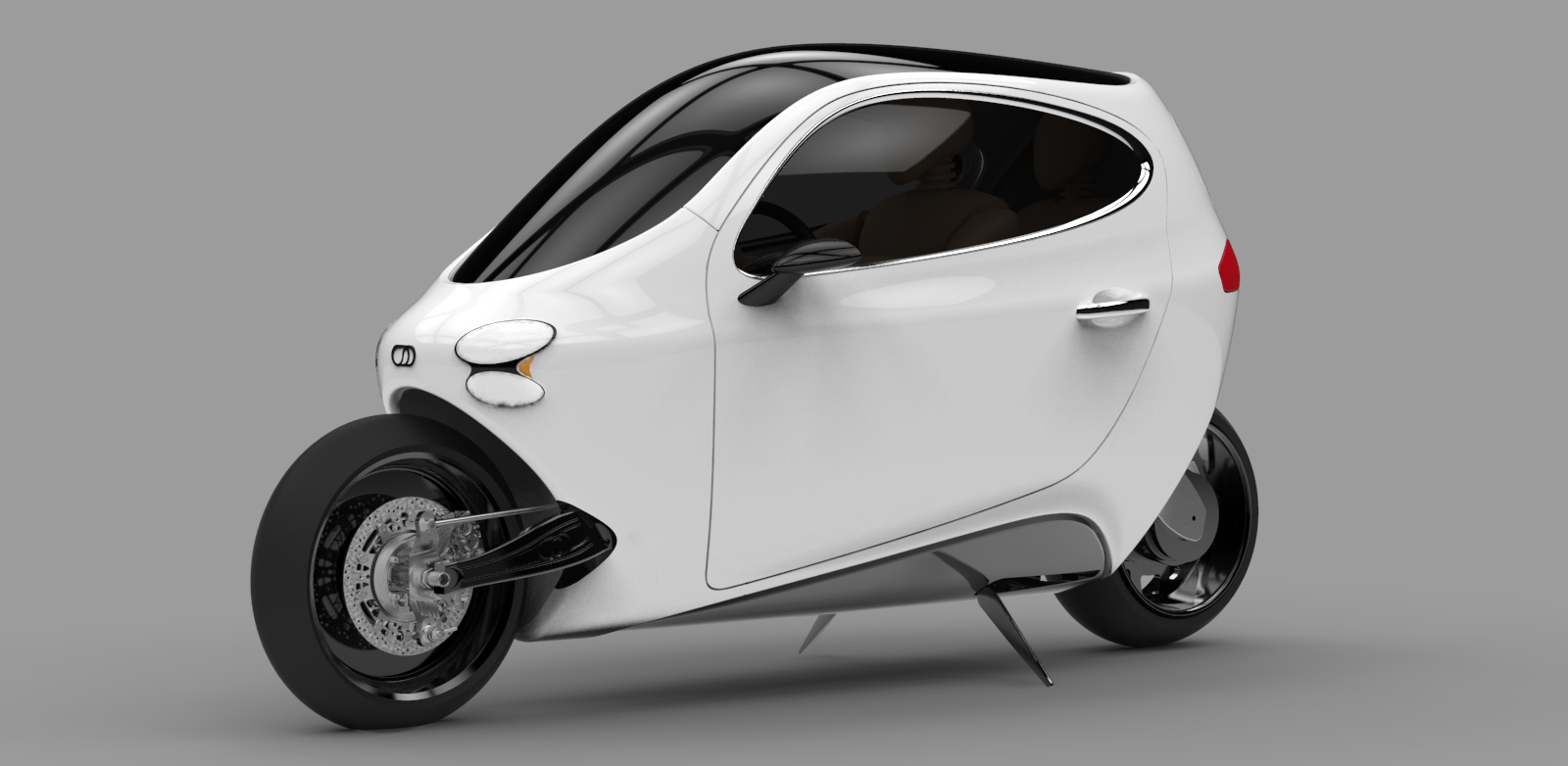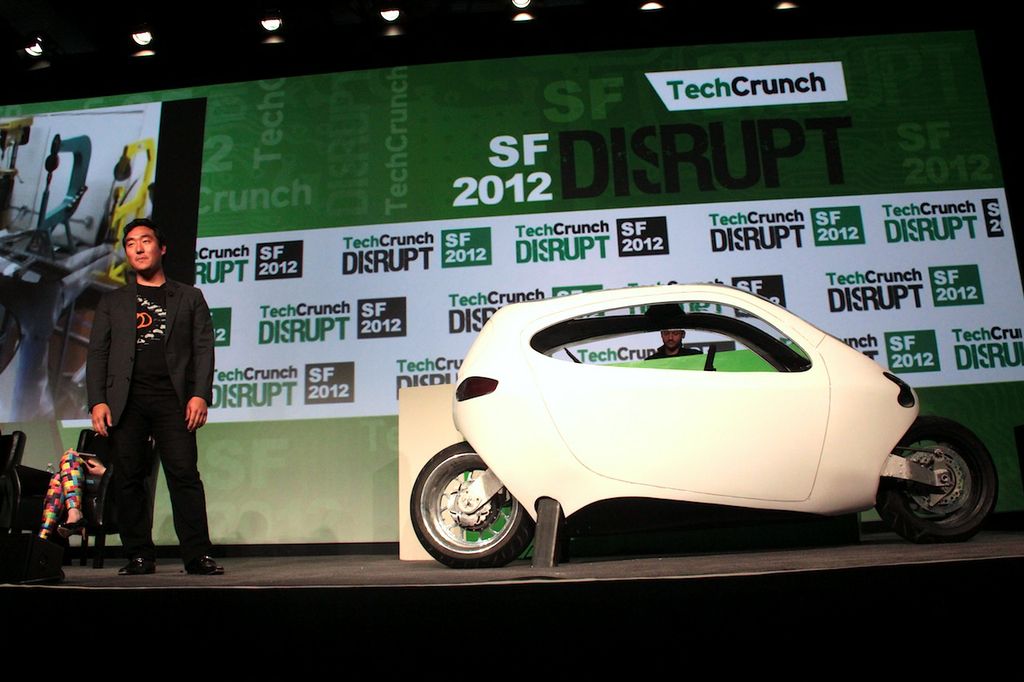The recent influx of both high- and low-end EVs and electric motorcycles have shown promise, but current battery technology is still limiting, and the cost of entry is far too high with the benefits of switching from petrol-powered vehicles not being quite as obvious or apparent in the near term.
Now imagine a vehicle that’s smaller than a Smart Car, nearly a third of the price of a Nissan Leaf ($32,500), safer than a motorcycle with a range capacity that just lets you drive and won’t ever tip over? What you get is Lit Motors‘ C-1, the world’s first gyroscopically stabilized, two-wheeled all-electric vehicle, which launched at TechCrunch Disrupt in San Francisco today. Oh, and it will talk to your smartphone and the cloud. Did I mention that you can’t tip this thing over? (I’ve tried.)
Founder, President, and CTO Danny Kim and his team at Lit Motors have built and approached the C-1 much differently than others have with their respective EVs. Instead of Frankensteining existing technologies, the C-1 has been designed, machined, and built by hand from the ground up in San Francisco. They’ve not only created something unique based on proprietary technology, but have also put together a package that appeals to the “cool kids” and the price-conscious in both America and abroad.
“We aim to be the future of personal transportation,” Kim told me. “By taking our vehicles to the mass market quickly and internationally, we will ease traffic congestion, decrease fuel use, reduce CO2 emissions, create 2,000 to 10,000 green jobs, and allow people to get around quickly and efficiently.”
While several electric auto and moto companies have emerged over the last five to 10 years, the fundamental issues of range and price loom large. The initial price will be $24,000 when the C-1 is expected to launch in 2014 and will take a year or two to drop down to $16,000. As it scales to being mass market (~100,000) around 2018, the price of the C-1 will drop down to $12,500. It is not only expected to top out at over 100 MPH but has an estimated range of up to 200 miles per charge and will go from 0-60 in roughly six seconds.
Commutes can be reduced by up to 50 percent, and thanks to its two wheels, the C-1 can lane split where legal. Without the cost of gas, it could cost you less than $1 to go upwards of 200 miles.
More importantly, the gyroscopic technology at its core can be used elsewhere to keep things level, such as airplanes or boats or even on top of buildings in high wind areas.
“Leveling suspension in sports cars could be the second largest application,” says Kim.
The extended range of the C-1 is also assisted by a KERS regenerative braking system, which uses flywheels to store energy kinetically. These flywheels are also part of the gyroscopic stabilization system keeping the vehicle upright in all situations – even a collision – while allowing the control system to dictate the tilt and lean of the vehicle at all times. In other words, as the gyros spin, downforce is created to keep the vehicle stable and level. It’s a bit peculiar to see a two-wheeler not topple over without the assistance of a kickstand or human power.
What’s most surprising, though, is that every bit of the two engineering and two full-scale prototypes were built by hand in SoMa for less than $750,000.
“As any cartoon villain will tell you, the only way to get something done right is to do it yourself,” Kim told me. “By controlling every aspect of the R&D process, we’re able to avoid the added headaches, mistakes, and cost of outsourcing. The knowledge we gain in the process of physically making everything is invaluable and informs our manufacturing designs considerably.”
Not only will the C-1 and future versions never tip over, but they’ll also be packed with every amenity you can find in other vehicles today, like AC, power windows, airbags, etc. What’s even cooler is that you can program certain maneuvers or start the vehicle from your smartphone and then initiate said maneuver (like a u-turn) by tapping on the steering wheel. You can even suggest things to the vehicle like “It’s kinda cold in here,” and the C-1 will increase the heat, says Kim. Your music (think Spotify or Rdio) and social networks (Yelp, Foursquare) can also be integrated in case you’re asking the C-1 to play some music or find a restaurant.
Kim added: “Distracted driving is a growing problem, so this is all experienced through a minimal digital HUD to convey the right amount of data with the minimal amount of distraction; basically Google Glasses for your windshield. The UX bar has been raised quite a bit over the past decade, and we aim to leap over it.”
Like most of you, I asked myself who the hell this guy was. Kim’s story is an interesting one. He’s a Reed College dropout, certified ASE Automatic Transmission mechanic, world traveler, studied architecture at Berkeley, spent some time at the Rhode Island School of Design, and nearly died rebuilding two Land Rovers in his quest to make “the perfect SUV.” It sounds about as crazy as it can get, but maybe that’s what we need more of in this world. Kim also machined his own spectacle frames from titanium. What can’t this guy do?


